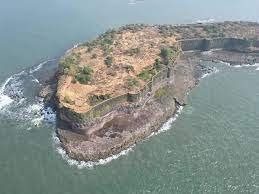India Nominates Maratha Military Landscapes for UNESCO World Heritage List 2024-25
India has recently nominated the Maratha Military Landscapes for inclusion in the UNESCO World Heritage List for the years 2024-25. This move aims to recognize and preserve the historical significance of these landscapes, which played a crucial role in shaping India’s military history. Let’s delve deeper into the reasons behind this nomination and its importance.
The Maratha Military Landscapes, scattered across various regions of India, represent a rich tapestry of historical events and architectural marvels. From ancient forts to strategic locations, these landscapes bear witness to the valor and strategic prowess of the Maratha rulers.
For students preparing for government exams, especially those aspiring for positions in civil services, understanding the historical context of Maratha Military Landscapes is essential. The exam syllabus often includes questions related to Indian history, and this nomination provides a unique opportunity to explore a lesser-known facet.
India’s decision to nominate these landscapes for UNESCO World Heritage status underscores the nation’s commitment to preserving its cultural and historical heritage. The nomination process involves rigorous evaluation, and success would mean global recognition of the Maratha Military Landscapes’ importance.

Why this News is Important
Preservation of Heritage:
By seeking UNESCO recognition, India aims to ensure the conservation and protection of the Maratha Military Landscapes. This step is vital in safeguarding our cultural identity for future generations.
Educational Significance:
For students preparing for government exams, this nomination opens avenues for in-depth study. Questions related to UNESCO World Heritage Sites often find a place in competitive exams, making this development relevant to exam aspirants.
Historical Context
The Maratha Military Landscapes have roots dating back to the 17th century, during the Maratha Empire. This era witnessed the construction of numerous forts, military outposts, and strategic locations that played a crucial role in defending territories and projecting power.
5 Key Takeaways from this Nomination
| Serial Number | Key Takeaway |
|---|---|
| 1 | Maratha Military Landscapes nominated for UNESCO recognition |
| 2 | Preservation of cultural and historical heritage |
| 3 | Educational significance for government exam aspirants |
| 4 | Historical context dating back to the 17th century |
| 5 | Global recognition if the nomination is successful |
Important FAQs for Students from this News
Q1: What are Maratha Military Landscapes?
A1: Maratha Military Landscapes refer to strategically significant locations, forts, and military outposts dating back to the 17th century during the Maratha Empire.
Q2: Why is India nominating these landscapes for UNESCO World Heritage status?
A2: India seeks UNESCO recognition to preserve and protect the cultural and historical heritage represented by the Maratha Military Landscapes.
Q3: How does this nomination impact government exam aspirants?
A3: The nomination is crucial for exam aspirants as it adds an educational dimension to history syllabi and may feature in competitive exams.
Q4: What is the historical context of the Maratha Military Landscapes?
A4: The landscapes have roots in the 17th-century Maratha Empire, playing a vital role in military strategies and territorial defense.
Q5: What are the key takeaways from this nomination?
A5: Key takeaways include the UNESCO nomination, preservation of heritage, educational significance, historical context, and potential global recognition.
Some Important Current Affairs Links


















